Crisco is not just for making the perfect piece crust anymore – at least not if you are a prepper. There are copious amounts of survival uses for this shelf-stable that for far too long has been considered merely a baking staple.
Crystalized cottonseed oil – or Crisco, was invented as a lard substitute in soap making by Procter and Gamble over 100 years ago. It is made from partially hydrogenated vegetable oil as well as fibers and fats that are processed into a solid. While cottonseed oil was used when the Crisco recipe was created in 1911, soybean oil and palm oils are typically used in our modern times.
Hydrogenated vegetable oils, fibers, and fats liquify at room temperature and then return to a solid. This process makes the saturated fats much more shelf-stable because unsaturated oils or fats tend to turn rancid extremely easily.
An unopened tub of Crisco is recommended for use up to two years, according to the manufacturer.
Top 16 Crisco Survival Uses
Egg Preservation
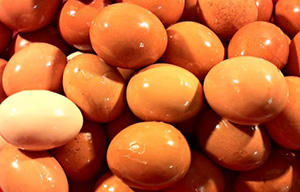
Our ducks and chickens lay more eggs than we can eat or I have the time to dehydrate, during any given week. To make sure we do not waste a single egg and keep plenty stockpiled for consumption during an SHTF event, I use Crisco to preserve them.
The bloom on the eggs left by the hen that laid them will extend their shelf life, but not as long as a coating of Crisco will. Wash the eggs and pat them dry. Once the eggs are thoroughly dry, gently rub Crisco all over the eggs and place them in an egg carton. Store the eggs in a cool dry place, like a garage or basement and they should keep for about 9 months.
Conduct the old-fashioned float or sink egg test to make sure the eggs are still likely safe to consume before eating. If you are unfamiliar with the old homesteading egg test, simply place enough cold water in a bowl to cover the eggs by about two inches. If the eggs float, they are not safe to eat. If they sink, the eggs should be safe to eat. Should the egg stand up in the water but remain mostly submerged, the egg may still be safe to use for a little while longer.
Chapped Skin
Keep some shelf-stable in your bugout bag, get me home bag, or INCH bag to deal with sore chapped skin. Rub just a little Crisco on your chapped lips, hands, or another body part that was overly exposed to the elements and let the soothing begin.
Dealing with chapped skin might sound like a minor problem, but that can all change quickly during a long-term disaster. If disaster strikes during the winter or a dry summer heatwave, your skin can be subjected to intense dryness and chapping – especially during a bugout or long trek home to reach safety. Not only will the chapping feel horrible, all of the little tears in the skin it causes can open the door for germs and bacteria to easily get inside your body. A tiny cut that would otherwise be no big deal during “normal” times can become deadly during an SHTF event where you are forced to become your own doctor.
Lamp Oil
Melt the Crisco so it liquifies – or just set it out at room for a little while. Pour it into your emergency lamps to use as lamp oil to provide light for your home or to shed light on a path you are walking. Shortening, the common nickname for Crisco, boasts a higher smoke point that either margarine or butter – meaning it is less flammable.
Related: How To Make Survival Lamps With Used Cooking Oil and Mason Jars
Survival Torch
Lather some liquified Crisco onto a rag and make a torch to outdoor lighting. Typically, it takes about two or three minutes of soaking the rag in the hydrogenated vegetable oil compound to saturate it enough to make a torch that will stay light for a decent amount of time.
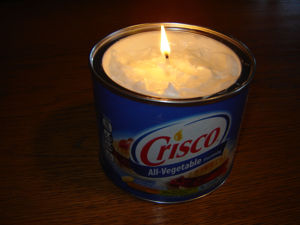
Survival Candle
Simply place a store-bought or homemade wick into a tub of Crisco and light it to make an instant emergency candle.
Depending upon the size of the tub, the candle should burn for multiple hours up to 45 days.
Snow Shovel Helper
Grease up both sides of a snow shovel to help lessen your load when moving snow or ice from your path. Even during a long-term disaster, shoveling the walks is a chore that will not go away. Being able to get outdoors to gather wood for the fire that is heating the house, hunt, go ice fishing, and to get to the outhouse that had to be built once society went pear-shaped.
Diaper Rash
If there are wee ones in your survival tribe – or are likely to come along during the years of an apocalyptic event, Crisco is going to come in handy on nearly a daily basis. Simply rub a little bit of the shortening on the baby’s bottom to alleviate the redness and pain associated with diaper rash.
Mechanical Helper
Have a piece of equipment on your survival homestead or around the house that is stuck or making way more noise than your OP/SEC plan allows? Lubricate the squeaky part or door hinge with Crisco – it makes a superb cheap and natural WD40 substitute.
Cast Iron Seasoner
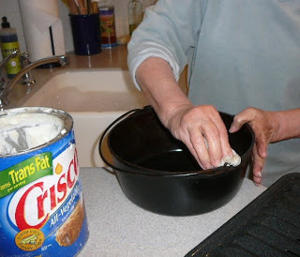
Like many survival homesteaders, I use my trusty cast iron cookware both inside and out regularly. But, even if you cast iron skillets and pots are reserved for camping or prepper training weekends, they will likely get conscripted into full-time use during a long-term disaster.
Grease the cast iron cookware both inside and out to prevent rust and to season the durable cooking tools after each use.
Related: 10 Advantages Of Using Cast Iron Cookware When SHTF
Headlight Brightener
If you are bugging out or merely trying to get around during the SHTF event or rebuilding years that will follow such an epic nationwide disaster, your vehicle’s headlights may be the only light on or around the road. Being able to see clearly in inclement weather will help you get where you intend without wrecking.
Clean the headlights with Crisco to remove bugs and debris and to prevent snow and ice from building up on them. This will be an especially helpful tool to keep in your vehicle’s emergency kit if you need to dim the headlights with mud for safety and security reasons during part of the journey but need them cleared to be able to remain on the road or trail later.
Calorie Enhancer
Keeping strong and healthy during a long-term disaster will surely increase your chances of survival. When food is scarce, calorie intake will drop and that will weaken the body – at a time when manual labor and physical exhaustion are peaked.
Add a teaspoon or so of Crisco to any food you are eating to bolster your calorie intake and prevent energy loss.
Firestarter
Keeping a fire going can prevent frostbite, hypothermia, allow the ability to purify water, cook, and sterilize medical tools. When building a fire outdoors during the rain or with damp kindling, slather some Crisco onto the tinder to help it light more quickly and sustain the growing flame.
Rust Protection
Protect your vital tools from rust by coating them with a layer of Crisco. The barrier will help prevent water, moisture, and humidity from reaching the finish and deteriorating it.
Soap Making
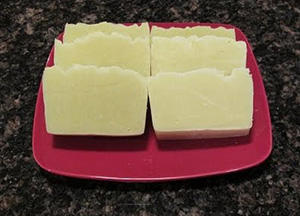
Make soap by mixing either solid or liquid Crisco with water and lye to create a slushy type consistency – adding in any herbs or essential oils you choose.
Allow the cold pressed soap to harden completely before removing it from the mold. It is best to let the soap age for a month or two before using it.
Remember, lye is highly dangerous if it gets onto your skin, in your eyes, or is inhaled without being in a properly ventilated area. Always work with lye while wearing protective gloves, and eyewear in an outdoor space.
Related: DIY Wilderness Soap And Shampoo From This Plant
Infusions
Crisco can be used as a carrier oil when making natural remedy infusions from the plants and herbs growing in your survival apothecary – or the ones you have preserved.
Wood Cutting Board and Kitchen Utensils Preserver
Keep your wood chopping board, wooden spoons, rolling pins, and other manual kitchen supplies made out of hardwood in proper working order by coating them with Crisco and allowing it to seep into the wood overnight. Rub the Crisco away with a dry clean cloth in the morning. Woodcutting boards, utensils, and bowls that are allowed to become too damp will not only have a shortened life span, but permit bacteria to seep deeper inside and allow it to breed and ultimately create a hotbed for disease.
Crisco might just be one of the most versatile and shelf-stable preps in your survival stockpile. Even though the manufacturer’s label indicates Crisco is only safe for use for 24 months from the date stamped on the can, that does not necessarily mean it cannot be used for the majority of the preparedness tips on this list.
You may also like:
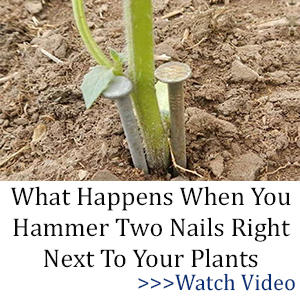 How To Heat Your Room With Vegetable Oil
How To Heat Your Room With Vegetable Oil
This Bug Will Kill Most Americans During The Next Crisis (Video)
25 Powerless Appliances for Your Homestead Kitchen

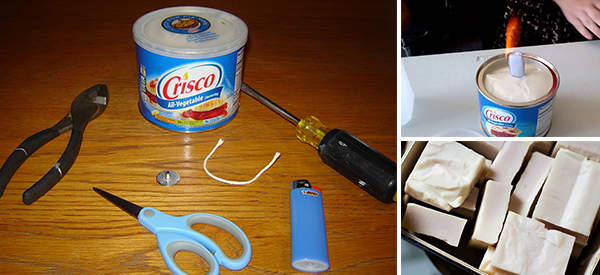













It can also be used to oil leather, remove makeup, and as a protective layer on exposed skin if you have a severe wind chill.
Thanks for an interesting article! 🙂
I’ve used it on guns to prevent rust and keep an working until I can get him oil. But I’ve also used pork fat? It isn’t the best thing! But it will get you by in a pinch. I have been using Crisco to make candles go further also. I use alot of candles and I have been putting Crisco into jars and then adding a regular candle for a wick. Birthday candles are good for small jars, taper candles cut to size of a Crisco can stick into the Crisco container will make your candles go along way.
Years later and this is still an interesting article. One suggestion for using crisco as a candle. A lot of the containers are plastic so could offer a danger. Save one of your metal coffee cans and move the crisco into that can. Will still offer light and a little warmth from the metal can heating up. After light is out and can is cool you can put the lid back on to keep it clean.
Kudos! Another great article and very informative. Thanks!
Crisco. Good for everything except eating! I would, and do, use coconut oil for all the food related ideas and for on the skin-the largest organ in our body.
Agreed, crisco is poison in your body as all hydrogenated oils are.
m.d.c.,
You took the words right out of my brain.
There are many better oils for eating.
According to Mimi from The Help: chapped libs, bags under your eyes, softening your husband’s feet (something like that).
The proportions of lye, water and Crisco to make a “slushy” solution would be very helpful.
I hadn’t thought about headlight dimming until I read this article.
During WWII, military vehicles and vehicles in the war zone in Europe had their headlights covered with just a square in the middle uncovered. The square was about 1 inch high by 3 inches wide. Some lights just had the upper half of the lamp covered.
I think the lights were painted because they wanted a sure fix and didn’t want to take a chance on something temporary coming off.
If you won’t want a permanent dimming of your headlights in a SHTF situation, duct tape would do the trick to mask off the light and if you leave a small hole, give enough illumination to light the road dimly but not be so visible as an unshielded headlight.
I will not use crisco for anything to eat Iuse olive oil and coconut oil to eat.
I spent my workdays in machine shops and occasionally I
would be having to use crisco as cutting oil while drilling / tapping steel. Works OK, not the best for cutting oil but is a lot better than nothing. All in all,,, about the equivalent to regular ole black, commercially available, cutting oil. One thing nice about using crisco was that it stayed stuck / solidified to the drill / tap and when the metal got warm, it would then melt and help cool the cutting action. This was especially true when using crisco for drilling. Give it a try, its a lot cheaper than purchasing cutting oil at an industrial supply store, and works about as good..
Thanks buddy, I have never thought of that.
NHK had a PSA about how to use beverage cans to make an oil stove or, as in this article, a Crisco stove. They used three 12-ounce aluminum beverage cans. Cut the bottoms off the cans 1/3 of the way up the can. They folded aluminum foil as high as the tops of the cans. They then inserted kite string (flying kits is much more popular in Japan than here in the U.S.) up through the foil to that it protruded through the top of the foil. The foil was folded so that it was triangular-shaped with each leg of the triangle holding a string. Each of the cut bottoms had the foil/kit string arrangement so that when finished, there were nine wicks sticking up. They then arrange the top portion of the cans around the bottoms and put the pot on top of those cans. Obviously this was not an arrangement for cooking for a family of five, but was adequate for heating water to make Cup O Noodles or instant ramen or heating a can of Campbells.
Instead of vegetable oil, Crisco could be the fuel of choice.
I like the idea of using three wicks in each can. The heat from nine wicks should quickly heat a can of soup or make a cup of bullion or instant coffee or any other hot beverage.
As with rancid or spoiled vegetable oil, just because the Crisco is past its use by date or even if it has fuzzy stuff growing on it or sort of smells odd doesn’t mean that it can’t be used for all the non-bodily function uses.
It can be used as a fire starter. It can be spread on boots which may make them less desirable to critters that like to gnaw on leather. It can be used for lighting purposes. It can be used on cloth to make water resistant clothing. A brimmed hat that has been impregnated with Crisco will certainly repel rain and keep your head warmer than a hat that is rain-soaked, especially one of those late autumn rains where the temps are in the high 30s or low 40s. Fido would probably relish it in his food, although I don’t know if Fido’s system could handle rancid Crisco. It probably could. Dogs do eat some nasty stuff and seem to live through it.
As with rancid oils, Crisco that has gone bad still has many uses limits only by your imagination.
Egg Preservation
Since our hens don’t use the nesting boxes, they lay eggs anywhere and everywhere, so washing them is a sanitary requirement, since they are usually covered in scat. Crisco to preserve eggs is OK; but, so is mineral oil or refrigeration or using any edible oil to replace the bloom.
Chapped Skin
We usually have petroleum jelly & Chapstick on hand; but, this is one to keep in mind.
Lamp Oil
Any oil or grease will work for this one; but, considering Crisco has hydrogenated fat in it, this may be a healthier better use than eating it.
Put some in a glass or metal bowl, and stick in some wicking material (cotton ball, paper towel, or strip of cloth) and it will make a nice, if somewhat dim light, and will even proved a bit of heat in a pinch.
Survival Torch
Not much different than the use of lamp oil above, just a variation on a theme.
Survival Candle
Ditto. More on that same theme.
To make a wick, soak cotton butchers cord in a salt brine, and then dry it. The salt will inhibit the wick from burning, allowing capillary action to pull in the oil and allow it to burn.
Diaper Rash
I can see how this would work; but, not any in our MAG.
Once again mineral oil could do the same; but, the important thing is to keep the area clean and dry, changing those diapers ASAP to avoid the issue.
Mechanical Helper
This will work for a tight fit; but, will not displace the water on a rusty connection like WD-40 (Water Displacement version 40), so keeping the real stuff on hand is also a good idea.
Cast Iron Seasoner
Any oil will work; but, this one will stick to the pan when spread around and baked in the oven.
Headlight Brightener
As described this might work well; but, too many modern headlights use a Plexiglas front cover, that simply gets frosted and foggy with age. Make sure you have alternatives for this one.
Calorie Enhancer
Adding to food might not be all that palatable; but, frying food in Crisco can add flavor to otherwise unpalatable foods. Who doesn’t like fried chicken, or corn meal & egg hushpuppies?
Firestarter
Yet another variation on the same theme. It burns.
Rust Protection
We’ve been doing this with mineral oil, the last of the oil in the bottle when changing oil, and of course, Crisco.
Soap Making
I find it easier to keep a substantial supply of soap on hand; but, have made soap from many oils. You can also make your own lye solution, by boiling the ashes from a hardwood fire in some soft water such as rain water, for about 30 minutes. Let the ashes settle to the bottom of the pan and then skim the liquid lye off the top.
Infusions
Unfortunately my natural apothecary is a little weak, and perhaps my biggest skill yet to learn.
Wood Cutting Board and Kitchen Utensils Preserver
This is similar to rust proofing your tools and seasoning your cast iron; but, not something I would use on a wooden a cutting board.
Plastic cutting boards can harbor bacteria in the cuts and nicks unless thoroughly cleaned and sanitized; but, that same study showed that wooden cutting boards did not have the same problem. It turns out that the wood after cleaning, dries out, and any bacteria left in the cuts and nicks are killed by dehydration as the wood sucks the water from them. I think oiling the board might stop the wood from having that effect, so best to thoroughly clean the board and let it air dry.
Your wooden utensils might be preserved this way; but, simple washing & air drying has kept ours in good shape for decades.
I’m surprised I didn’t see any statement about rubbing Crisco on your skin following a bang or scrape to prevent or lessen bruising. It works. I’ve made believers out of skeptical people who have tried it.
Intriguing… I’ll have to try that. I’m a klutz so I’m always getting banged up. I wonder if coconut oil would work… have you tried it?
I wanted to see what happened when you hammer 2 nails next to plants. I don’t want to listen to some persons life history to get the info I want. my time is too valuable to waste.
Then research it. Was that answer too long for you? Don’t want to waste your time seeing it is precious to you.
You girls(Papillon&Wannabe) sure have fragile egos.
Get over it!
The definition of those who have nothing meaningful to add to the conversation is “useful idiots”.
“Normie” Chuck
“Useful idiots” is the term top communists apply to their (especially, unknowing) minions. It is a real term.
Weaponizing a term further to expand your war between the sexes is not worthy.
“Normi” Chuck
Apology to you for prior typo on your name .
Best wishes for a good future+
Everything is bad for us we are told.
It must be true or the Rat Lawyers wouldn’t have anyone to sue
By the way there is another word between Rat&Lawyer.
Have those power outages in California effected any Californians on this feed?
Wannabe
I moved out of California…
However, the Rothschild bankers of the City of London own ALL energy corporations of the USA (not just PG & E of California) and
they are the powers behind the depopulation Agenda 2030…so
we will all be hurt one way or the other,
either through d.e.w.fires, poisoned chem trails, fake medicine that they own patents on, poisoned foods, managed hurricanes, floods & earthquakes that are falsely blamed on natural climate issues.
Best prep the best we are able to and stay mightily prayerful?.
Sorrows are real – but so is Divine Providence.+❤??
Crisco is not healthy. I get it but in a SHTF situation, other products may not be available. Folks, many of us can’t fathom the hardship and lack of store bought products that likely won’t be available. Thanks for the article.
Thanks Don, alot of folks ain’t ever went without, just get in your car and go get it, or better yet, order it online, I’m thinking that alot of people are going to have a break down when this goes down! I’ve been living like this most of my life. Only got into this computer B.S. A few years ago. I’ve never really been the kind to get it right away. Folks seem to want it when they push a button or I guess it’s called a key? Lol 54 years old and still learnin! Have a good one hoss!
How many of you “I don’t eat Crisco” people have margarine in your fridge? If you don’t use real butter you are poisoning yourself with oleomargarine. It was invented to help turkeys gain weight faster. When fed to the turkeys…they died! Somebody said…”Well, it tastes like butter, so, let’s put food color in it and sell it to humans.”
Lonnie G,
We use both butter and some vegetable oil substitutes that are healthy; but, many of the cheap ones are not.
Your history of feeding it to turkeys that then died is however, a bit of hyperbolic myth.
Margarine was first created in France in 1869 and was created by food chemists in response to a challenge by Emperor Napoleon to create a butter substitute from beef tallow for the military.
Today’s margarines typically use vegetable oils, like Soybean oil, the most common; but, also use sunflower, corn, palm, safflower, cottonseed, peanut, and canola.
About a century ago, French and German chemists figured out how to convert liquid vegetable oils into a semisolid product through the use of hydrogenation, a process we now know makes the product unhealthy.
The healthy substitute we use sparingly, is ”Smart Balance” engineered for flavor without the artery clogging transfats and containing the following ingredients: Vegetable Oil Blend (Canola, Palm, and Olive Oils), Water, less than 2% of Salt, Pea Protein, Natural and Artificial Flavors, Sunflower Lecithin, Vitamin A Palmitate, Beta-Carotene (Color), Vitamin D, Monoglycerides of Vegetable Fatty Acids (Emulsifier); and Potassium Sorbate, Lactic Acid, and Calcium.
I would rather use old school lard, everyone give me the bad things about it, but I don’t really care I grew up on it besides, if it’s a survival situation I’m not gonna complain about calories! Lol But that’s my own opinion. They’ve just about done away with real lard anyhow, unless you butcher your own hogs? Well anyhow this is once again just my opinion.
Yep, Lonnie, heard that story about 10 years ago. The stuff is crap. People do not eat it!! Just use butter, at least it’s actual food. Set a tub of margarine out and the flies won’t even touch it! That should tell you something.
Lonnie
Good point.
Many of us have been avoiding margarine since learning, in the 1950s, that Russia refused to accept any from the USA – insisting only on butter.
Personally, i prefer butter from grass fed cows grazing in Ireland (fewer chem trails).?
Vegetable oil on wooden utensils, cutting borads and bowls will go rancid. It is better to use mineral oil. I am a woodworker and sell these objects and I will not use vegetable oil to treat my work to send home with others.
woodchuck,
In general I agree; but, we do use some vegetable oils on wooden utensils that are used and washed frequently.
For long term storage mineral oil is the better choice, since it will not oxidize and turn rancid.
I would suggest that this recommendation stop because if SHTF and there is no medical service readily available and you get food poisoning from a wooden spoon or fork that vegetable oil was used on you will regret it.
Many years ago I used vegetable oil but then was told a few years later about what I am sharing with you concerning mineral oil. I never went back to vegetable oil. Plus mineral oil is cheaper. ‘What comes from below ground will not spoil but what is grown on top of soil will.’
Crisco was actually invented by the Germans before
the first World War as a lubricant for their U-boats.
I have some in by back stock
Septic Tank cleaning Elkhart
house inspector Dayton